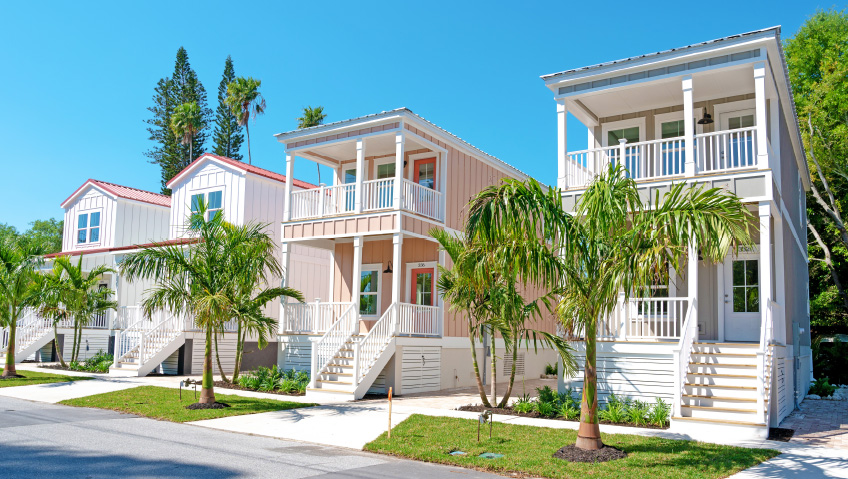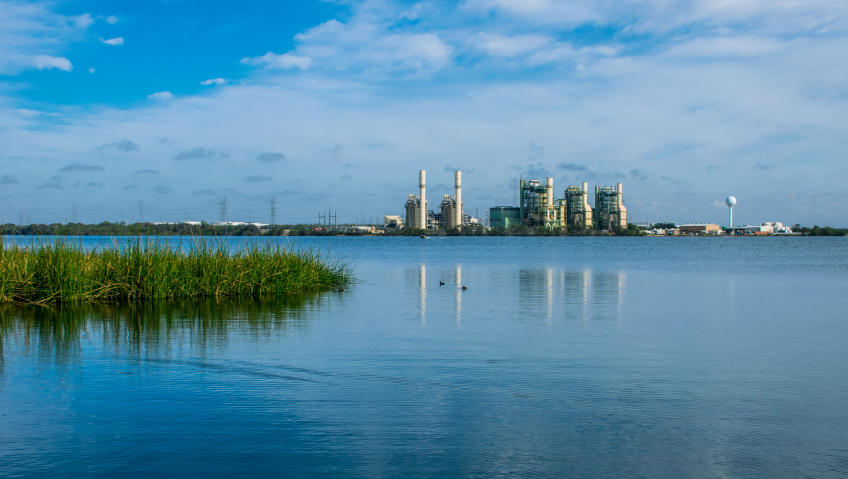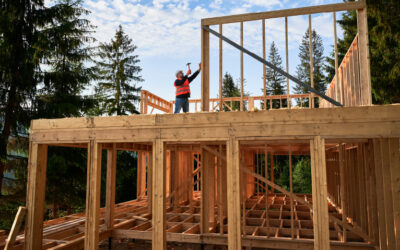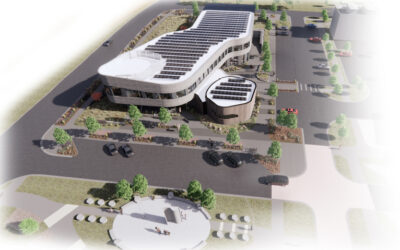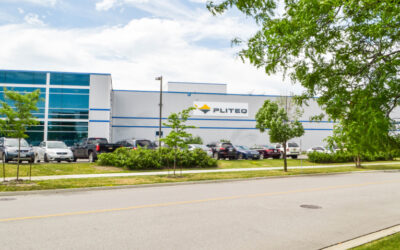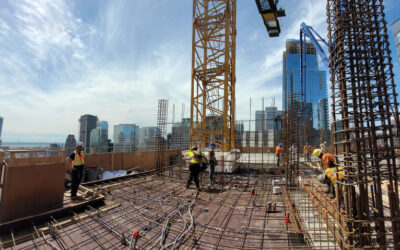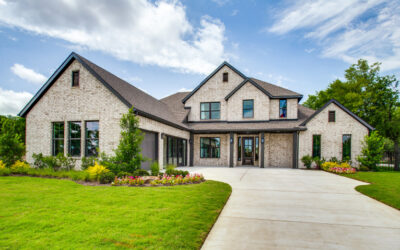Energy-efficient, climate-resilient, and economically viable, Affinity Modular homes are constructed using next-generation modular technology for a variety of structures including single-family and multi-family houses, hotels, and offices. A Vantem firm based in Lakeland, Georgia, Affinity’s buildings, in contrast to typical site-built construction, are assembled in a controlled atmosphere, meaning no materials utilized in their build are exposed to the elements.
Known as manufactured, mobile, and prefabricated—or “prefab”—houses, the construction quality of modular homes can vary greatly between providers. Affinity Modular homes stand apart, however, as they are not only designed to be erected on various types of foundations such as stilts, pilings, or crawlspaces, they are also strong and sturdy, meeting and exceeding state and municipal building codes and able to handle Wind Zone regulations up to 180 MPH.
The market for prefabricated houses is quickly expanding for a number of reasons, including their precise and effective construction technologies in a regulated and environmentally protected building center in accordance with the same municipal and state building codes as a home built on-site. Modular homes are also typically far more durable than site-built homes as they are moved from the factory to the home site, and they just might represent some the most popular and sought-after dwellings for future home buyers.
“At Vantem we believe modular is an important part of the future of construction,” says Chris Anderson, CEO, Vantem.
“As everyone knows, the labor market continues to make everything more difficult,” adds Marta Hardy, Sales Manager. “Add to that the nature of how site-built homes rely on factors often out of the contractors’ control and you have a perfect solution with modular construction.”
Not only does factory building bring Affinity the increased productivity that other industries have implemented and benefitted from for more than 100 years, it also helps create a controlled environment that keeps the building process reliable and well-regulated.
“We believe the future includes new ways of factory-building homes,” adds Anderson. “New techniques and new materials will further increase productivity and improve the weather resistance and energy-efficiency of homes being delivered.”
Affinity is the first factory in the U.S. to have access to Vantem’s cutting-edge, systems-built technologies to provide clients with high-quality homes and structures with excellent architectural designs by integrating the most advanced machinery and technology available today. Housed on a private 13 acres, the complex’s production plant spans more than two-and-a-half acres, allowing for construction in controlled environments unhampered by delays caused by bad weather.
“Weather at the job site is not a factor for modular homes,” says Hardy. “There will be no lost time due to rain, wind, et cetera, as modular homes are built inside a building in a controlled environment.”
Sub-contractors not showing up as planned can also play havoc on a contractor’s schedule, she adds. One missed sub-contractor visit creates a domino effect with the rest of the builder’s schedule. “Material can walk off the job site or material can be subject to weather damage; your home can get wet before it’s even finished. Other factors can occur which will often lead a builder to seek how to build a better mouse trap.”
Because of all of these benefits coupled with an ever-increasing housing crisis, there is a growing emphasis on expanding the availability of energy-efficient homes.
“40 percent of global carbon emissions come from the built environment, a majority of which is a result of the energy needed to heat and cool buildings,” says Anderson. “That energy use can be cut by 70 percent or more through building better thermal envelopes that are more airtight and have higher effective insulation.”
This is both an imperative to help stave off climate change and an opportunity as energy reduction also reduces costs for homeowners and provides a product that people really want, he adds. Affinity Modular has the ability to do all that and more as it helps propel the modular industry forward.
“Affinity has always made a great product that is hurricane-resistant and highly customizable,” Anderson says. “Now that the company is part of the Vantem family, the company will be adding new capabilities that will allow Affinity to deliver highly energy-efficient homes, including Net Zero, without a premium cost.”
This will be made possible by implementing Vantem’s proprietary system for the building envelope that decreases energy use. The company’s panel-based system is simpler and more productive, allowing the team to increase production and deliver more high-quality homes to customers while maintaining a very strong and resilient structure.
“The frequency of conversations related to energy is only surpassed by those discussing politics—and are often in the same conversation,” says Hardy. “As home costs rise, homeownership becomes more difficult. The cost of the home, which often boils down to the house payment, is only one factor people face in their search for being able to buy a home.” Utility costs must also be considered, she adds, and better windows, doors, sealants, HVAC, insulation, and more can all contribute to a lower utility bill.
“We’ve always built an energy-efficient home,” Hardy says. “With the introduction of the Vantem construction method, we expect to bring a new element into modular construction not seen by any other companies in the marketplace.”
Vantem being a leader in energy efficiency in addition to the other attributes it offers only makes the homes even more attractive to future homebuyers. “People are smart and they know that over the lifetime of the home, lower energy costs are very important,” says Hardy.
There have been plenty of challenges in the construction industry over the past few years—many brought on by the pandemic—but Affinity has continued to tackle all of them head on. “Although not completely immune to the labor market challenges, we are making headway,” says Hardy. “It takes commitment and we will continue to work to make Affinity Modular a premier employer.”
In the face of industry challenges, the company also embraces its many successes. “Reacting quickly to market demands is another area where the company has exceled,” Hardy says. “Our response to the Hurricane Ian housing need in Southwest Florida was deliberate and timely. We have been through it before and were poised and ready to help in any way necessary. Our availability to help homeowners rebuild from the most recent Hurricane Idalia will be no different,” she predicts.
“Major hurricanes have raked through our market over the years we have been in business. I believe our success has been based on the strength of our home to withstand these storms, which has attracted more buyers.”
Affinity has always built a great home, she adds, starting during a time when the housing market was very difficult. The company learned how to build homes that were primarily erected in coastal regions of the South for customers who were not a typical “payment” type of buyer, but instead had discretionary income such as retirement funds.
Looking ahead with optimism includes plans for growth and continued success in a market the company is quickly making its mark in.
“We expect to significantly expand Affinity in the very near future,” says Anderson. “The most common comment we heard from customers when we purchased the company was that they wished Affinity had more capacity; we listened, and the excellent team at Affinity increased capacity almost 40 percent in a few short months. We will increase capacity several-fold more with the expansion.”
Listening to customers and striving to meet their demands while keeping company goals in mind are just a few of the factors that have led to the firm’s success in the past and will continue to do so in the years to come.
“I’ve worked in housing manufacturing my entire life, and what we do at Affinity Modular is different than the other companies I’ve worked with,” says Hardy. “Henry Ford said, ‘you can have any color car you want, as long as it is black’—that’s the basis for all manufacturing: find something to build and build the same thing over and over. That is not what we do at Affinity Modular.”
Instead, she says, the company works to recognize that people want what they want, and everyone is different. While technological advances have created a different way of shopping today than 30 years ago and customers can get anything they want after a few clicks on a keyboard or mobile device, why would it be any different when buying a home?
“Is it hard? Absolutely! We all laugh around here because we would like nothing more than to be able to build the same thing over and over, but that’s not who we are. So, we had to become good at doing hard!”
That’s just one of the important qualities that set Affinity apart from other companies, and Hardy stresses “other,” not “similar,” as she believes there are no other companies similar to Affinity Modular working today. And she sees even more progress coming up.
“We expect to grow,” she says. “It’s as simple as that. We expect to take what we know and do it better and faster. We will be the company to watch.”

